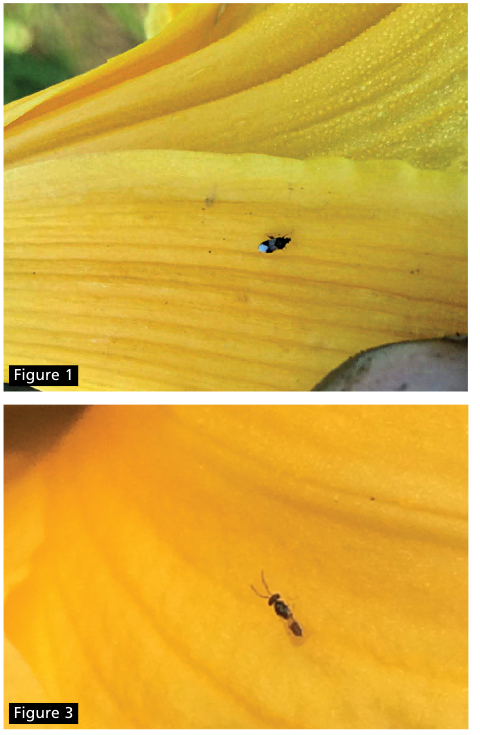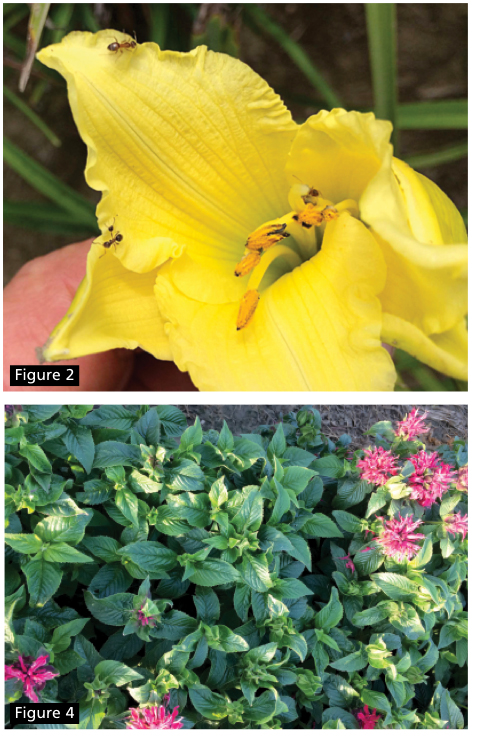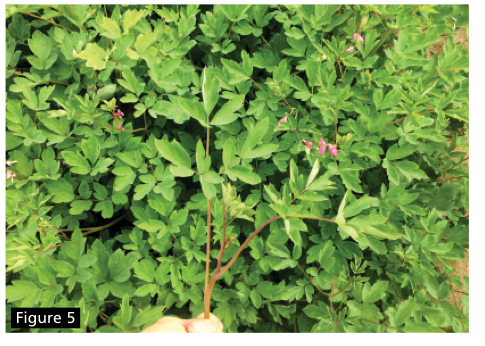11/1/2019
Fall 2019
Roger McGaughey

Friendships matter. As one gets older, time seems to fly by even more quickly. But when real friends get together, it seems that time can stand still and you can just enjoy the moments.
My wife and I recently had some English grower friends visit us for three weeks. We’ve known each other for 47 years and they traveled across the pond to spend some time in our home with us. We did some travelling while they were here and one of the places we visited was the Coastal Maine Botanical Gardens in Boothbay, Maine. I would recommend this destination to any garden enthusiast. These gardens are spectacular and it’s great to see some of the perennial varieties that we produce in a true landscape setting. It also refreshes the mind with new ideas for my own gardening exploits.
Getting back to work-related activities … in my last article, I mentioned that we were moving our greenhouse operations to a new location. This move was completed in early July, right on schedule, and credit is due to all employees concerned for the team effort exerted to make this happen. Some greenhouse construction is still in progress, but overall, everyone is looking forward to life in our new home.
As in all walks of life, there are lessons to be learned. Some of the new greenhouses didn’t have a plastic roof covering for a while and a quantity of our perennial plug tray material was grown in direct sunlight. What a difference! It makes you realize the benefits of light intensity and what you’re missing under a greenhouse structure. Plants stay shorter, and in a lot of cases, the extra sunlight reduced the need for PGR applications. Certain crops requiring low light intensity posed some challenges, but overall the transition to our new location has been successful.
The move unfortunately took out some of the automation of our growing procedures. One of these was the automatic boom application of our RSWP Plus/On Gard mixture to newly stuck cuttings or any transplanted material. As we really value the importance of applying these materials at the start of the growing process, we have, for now, gone back to basics and are applying the appropriate amount by hand. The goal is a white healthy root system for each crop. Are we applying the correct amount of material? How do we know?
During the summer, we were fortunate enough to have a visit from our BioWorks rep Mark Farnham and their new Technical Services Manager Anna Chapman. During this visit, the growing team discussed a program for ongoing testing of the amount of Trichoderma in our plug material to determine the need for future applications. A few specific varieties will be chosen for this experiment and the BioWorks laboratory will provide a record of the Trichoderma levels through the life of the specific crops.
 We’ve tested selected items in the past, but this will help us to keep our “finger on the pulse” with respect to root health of the chosen crops. Nothing beats regular root inspection and this ought to be done in conjunction with a crop’s watering assessment, but knowing if and when to reapply the biological mixture would be of tremendous economic advantage. We still don’t have to drench any chemical root fungicides on our plug crops since the addition of On Gard to the RSWP Plus application, a practice we started earlier this year.
We’ve tested selected items in the past, but this will help us to keep our “finger on the pulse” with respect to root health of the chosen crops. Nothing beats regular root inspection and this ought to be done in conjunction with a crop’s watering assessment, but knowing if and when to reapply the biological mixture would be of tremendous economic advantage. We still don’t have to drench any chemical root fungicides on our plug crops since the addition of On Gard to the RSWP Plus application, a practice we started earlier this year.
From a biological pest control standpoint, in our bareroot field crops it’s been another successful year. We’ve again used plantings of lobularia, with two field Orius introductions. The timing of these predator releases depended on crop development and weather conditions, but happened about three weeks apart.
As mentioned in my July article, we tried some Artemia tape from BioBee to aid in Orius establishment. The tape works well in a greenhouse, but the jury is still out on its outdoor success. Weather conditions, rain and field irrigation tend to wash off the feed bands at the edge of the tape and dirt splashes tend to cover up what may remain.
Orius was again found in many flower types, especially daylilies, and on any scouting walk only a few thrips were found in any one flower (Figure 1). In one daylily field, a lot of ants were found in each flower checked (Figure 2). Is it possible that this insect helps to control any thrips that might find their way into the flowers? The question has been asked by some of my entomologist friends, but so far no definitive answers are
forthcoming.
In late September, Aphidius were also found in clean daylily flowers (Figure 3). Throughout the season, the lobularia crop has been alive with hover flies and other beneficial insects. We’ve again achieved clean crops this season without having to spray any chemical pesticides. Who knows what other “good guys” are at work out there that we haven’t yet identified?
This year, with reasonable field biological pest control under our belt, we attempted to see if we could avoid having to spray chemical fungicides outside as well. Often while spraying these materials, the leaf surfaces are covered with inert materials, which tend to dull the leaf surfaces and reduce photosynthesis.
A shiny leaf is often indicative of a healthy plant, so this season we tried a soft approach. We used a combination of On Gard, Verdanta OFE and Uptake, and sprayed this mixture on a weekly basis to all of our field crops. We were extremely happy with the results and some crops had the cleanest foliage we’ve ever seen in an outside environment (Figure 4).
shiny leaf is often indicative of a healthy plant, so this season we tried a soft approach. We used a combination of On Gard, Verdanta OFE and Uptake, and sprayed this mixture on a weekly basis to all of our field crops. We were extremely happy with the results and some crops had the cleanest foliage we’ve ever seen in an outside environment (Figure 4).
We’re not quite sure why this mixture was so effective, but believe the On Gard plays a significant role. Having trialed this material last year, we found that certain crops, (e.g., dicentra, which tends to go downhill in the summer heat), stayed greener for longer in the growing season (Figure 5). The stress-relieving nature of the On Gard certainly seems to increase crop performance—only in mid-September did we run into some mildew problems when the weather turned cold and damp. Then we had to start some chemical fungicide applications.
There are a lot of positives from our very busy greenhouse relocation year and we’ll endeavor to build on those in the future. It’s very encouraging to see that more operations are getting into biological growing, so the more we share information and keep abreast of new information and research, the more we’ll help to provide a cleaner environment for our children and grandchildren. GT
Figure 1: Orius on a daylily flower.
Figure 2: Is it possible that the ants in the daylily flowers help to control any thrips?
Figure 3: Aphidius in a daylily flower.
Figure 4: A clean monarda crop.
Figure 5: Dicentra, which tends to go downhill in the summer heat, stayed greener for longer in the growing season.
Roger McGaughey, head grower at Pioneer Gardens in Deerfield, Massachusetts, was educated in Northern Ireland and England and has 47 years experience as a grower.